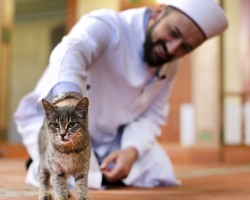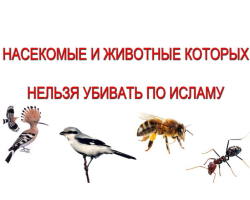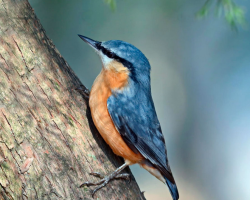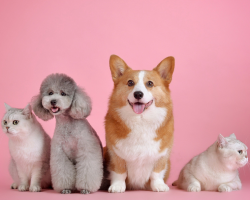This article will talk about the breeding of chinchillas at home and the rules for receiving childbirth.
Content
- To breed chinchilla, do you need to create conditions correctly and choose a pet?
- How to breed chinchillas: the timing of mating, ripening, estrus, pregnancy
- How to breed chinchilla at home: Technique for beginners
- How to breed chinchillas and take birth: Causes of complications
- How to breed chinchillas: postpartum complications and the possibility of miscarriage
- How to breed chinchillas: growing young animals
- Is it profitable to breed chinchillas for sale: owners' reviews, scheme
- Video: Drive chinchillas - what should be done during the mating season?
On the one hand, this is a profitable business that does not require large preliminary costs, on the other hand, a fascinating hobby. Indeed, today these animals are considered not only as a source of valuable fur, but also as pets, who are often bought in city apartments or private houses. But before breeding chinchillas, you should familiarize yourself with special literature, study the features of their content, breeding, growing young animals and take care of creating the necessary conditions.
To breed chinchilla, do you need to create conditions correctly and choose a pet?
Your first task htoy to breed chinchilla– choose and equip the room for chinchillas right!
Important: the volume of your business directly depends on the area that you are ready to allocate for the maintenance of chinchillas. The minimum cell size per animal should be 50x50x70 cm (Sh*g*B). But the larger the cell, the more comfortable animals feel, the higher the percentage of their birth rate. It is impossible to allow the content of animals in tight cells or cells of irregular shape - round, narrow, multifaceted, this negatively affects their psyche, health and reproduction of offspring.
- The house should be dry, bright, it should be maintained in the temperature up to 20 ° C. Violation of the temperature regime, dampness and poor illumination adversely affect the health and productivity of animals. The rooms in the room should be located in such a way that it is convenient to clean and care for the chinchillas.
- It will not be superfluous to think in advance about the feed and the possibility of wholesale purchase. It is necessary to feed tribal chinchillas with high -quality finished food with the addition of grain and greens. The same applies to sand. You can not save on the sand, gaining it somewhere in natural conditions, this may result in infectious infection and the death of all animals.
You can read full information about the correct choice of the house, its arrangement, the choice of permitted and necessary products in our material "Rules for maintaining and feeding chinchillas at home."

You need to breed only healthy chinchillas. And there is some advice on how to determine this.
- Of course, We turn our attention to the fur! There should not be any rods. It should be even, moderately fluffy and smooth.
- Stick the fur against growth. This must be done that to consider the skin and the coat itself for lice, ticks, dried particles of pus and other inflammatory lesions.
- The muscles of the animal It is also worth probing even before the purchase, because it is not visible for the wool. The rodent should not be the bones of the chest - this can be a signal about the disease, as well as excessive exhaustion. Although it can also be malnutrition. Obesity must also be excluded.
- Inspect the place of the anus - It should be covered with a hairline. But it should not be sticky - this indicates a possible diarrhea.
- Attention to the eyes - they are expressive, shiny and without purulent or tearful secretions. Yes, sometimes it can be a signal that the animal was dust in the eye. But it can also be a signal about a possible draft or an infectious disease (especially if discharge from two eyes).
- Chinchilla's nose Also should not contain any mucus, be dry and clean. Sneezing is a signal of colds or dusty conditions.
- Ears Also clean, without stalls on the outer or outer ear. Otherwise, this can speak for the defeat with ticks.
- The breath is even, without a whistle. The chinchilla itself is mobile and active, often not the thread of the muzzle with its paws, does not drain the tail.
You need to purchase chinchillas for breeding in nurseries or on farms where tribal work is underway. It is important that they come from different factory lines and families that differ in high fertility, and are healthy. It is desirable to have a veterinary certificate of pedigree and health of the animal.

How to breed chinchillas: the timing of mating, ripening, estrus, pregnancy
- How to breed chinchilla? Chinchillas reach puberty By the age of 6-9 (females usually 1-2 months earlier than males) and retain their reproductive abilities up to 8-10 years.
- At an older age The tribal use of the female is not recommended, since old females often have complex birth, and young animals are born weak.
- But also It is also dangerous to breed too young chinchillas - This can cause the fetal pathology and complex birth. Note that some females can achieve puberty earlier, but do not rush. The weight of the finished chinchilla - for 500 g!
- Advice: The female needs to mate from the second estrus, up to a year, the male should be 2 months older. After year-old age, on the contrary, preferably 2-3 months younger. The male is ready to mate at the call of nature.
Perfect period Extensive - from autumn to spring, or rather - from November to March. In captivity - in April.
- The estate in the female occurs approximately once a month (on average after 30-40 days, at least 20, a maximum of 60) and lasts for 3-7 days. By external signs, it is possible to determine its onset by pink color and a slight swelling of the genitals in the female. The presence of white mucus near the loop is also possible.
- By animal behavior - They begin to actively be interested in each other, the female raises the back of the body, and the male tries to cover the female. At the same time, it becomes active, wags its tail and cooled. But observations are complicated by the fact that this usually happens at night.
- Advice: If the female loses interest in the partner, then ovulation has passed and pregnancy has come. Ovulation itself occurs 12-24 hours after the start of estrus.
- In the case of prosperous fertilization Pregnancy in the female lastsabout four months (110-115 days), but due to the roundness of the forms of the female, it can be difficult to notice to the last.
- Can help regular weighing, which begin to be carried out daily after 2-3 weeks after the alleged mating. A gradual increase in weight is evidence of the onset of pregnancy.
- It can also suggest The appearance of white vaginal paraffin plugs is about 2-3 cm.
- Когда прирост веса станет очевидным и до родов останется несколько недель, самку следует put in a separate cage.It cannot be left with the male to avoid re -coating after childbirth.
Important: a cell for the postpartum content of chinchilla should be with a small net or a minimum distance between the rods so that the newborn cubs can not crawl or get stuck in them.

How to breed chinchilla at home: Technique for beginners
There are two types of breeding-polygamous, when one male serves 3-5 females, and monogamous or paired, when constant pairs are formed. The latter has a number of advantages. When the animals are contained in pairs, they are more calm, not subject to stress and their mating is more often productive.
- To breed chinchillas, they should be introduced before. You can do this even in different cells, simply placing them nearby. They get acquainted with the smell. This period can take from 2 weeks to 1 month. You can accustom them to the smell by changing the cells of animals.
- The female chinchillas are larger, more aggressive and dominant. Therefore, it is necessary Only plant a female to a partner!
- When they got along with each other, they can even be released together for a short walk under strict control.
- For a dot, use another, more Dimensional cage - It must be washed. Take out all the shelves and toys as much as possible, but leave the labyrinth. In it, the male can hide in case of attack. Be sure to put a bake away with sand.
- Before putting them, it is recommended Bake in sand with feces or urine partners. During planting - from 3 to 4 hours - you must be near the cage in order to provide assistance in time. If there are no incidents after this time, then you can leave them to get acquainted further.
- But still on the first day you should not lose vigilance. Focus on nutrition and arrange patience - Animals do not always immediately want to acquire offspring.
- Advice: At the bottom, cover a lot of hay or grass. Eating greenery will divert their clarification of relations.
IMPORTANT: A certificate of mating of the furs on the floor, knocked down hay and the presence of white bundles (dried seed fluid) will be evidenced. The process itself lasts a few seconds, while the male actively grabs the female tooths. After fertilization, in order to avoid infection and re -act, a protective cork is formed in the female.

How to breed chinchillas and take birth: Causes of complications
During this period, we begin preparation for childbirth and more thorough observation of the female. It is very important to breed chinchillas and get healthy offspring, leave the female alone and in silence for this period!
- Shortly before childbirth (about 60 days later) Her nipples acquire a pinkish tint and swell, the stomach increases in size and sags, bloody discharge may appear from the loop. Immediately before By childbirth, the female drops to the floor of the cage, arranged in the corner and begins to lick the loop.
- Usually chinchillas give birth on their own, But childbirth still require observation so that at the right time you can provide the necessary assistance. The first birth, as a rule, flow longer. On average, the female has 2-3 cubs, sometimes more-up to 5-6, with the interval From a few minutes to two hours.
- During the year, chinchilla can lead 2 broods. The third time is undesirable, because Expands the body. It is also noted, the smaller the fruits, the larger they are. Older females have more brood.
- The female chinchillas have a two -horned uterus, Depending on the number of fruits, they can develop both in one horns and in both. The number of shorts that come out after the birth of chinchillas depend on this, and which the female seeks to eat. You can allow her to do this with only one last, eating more of them is fraught with a digestive disorder.
- During childbirth, the female can moan, wriggle and bend. Childbirth is usually at night or early in the morning from 5 to 8.Cover for 2-4 hours. But if you drag out, you can give only sweet syrup 2-3 ml 3-4 times a day or sand for 1.5-2 g.
If the birth process is very tightened - more than 8 hours, and the female behaves uneasily, you need to seek help from a veterinarian.
The reason for the protracted births requiring the intervention of the veterinarian may be the following complications:
- improper presentation of the fetus;
- the large size of the fetus, which is not able to go through the birth canal of the female;
- dead fruit in the uterus, blocking the process of childbirth;
- loss of uterine tone during prolonged birth;
- large weight of the female that prevents normal labor;
If the birth flows well, after their completion, the female licks the cubs, pushes to the nipples and calms down.
- Chinchilla puppies are born with a fur, With open eyes and erased teeth, and a few hours after birth they are already able to move on their own and even run. The weight of newborn chinchilles-30-60 g.
- The female chinchilla has Three pairs of well -developed nipples, Therefore, they usually feed offspring without problems, artificial complementary foods are required only with a very large litter or any complications.

How to breed chinchillas: postpartum complications and the possibility of miscarriage
A successful completion of childbirth does not mean that everything went well and you can weaken the observation of the female and her offspring. There remains the danger of various postpartum complications. If you seriously decide to breed chinchilla, then you should arm yourself with all the knowledge.
Important: ideally, with any complication, you should contact the veterinarian! Self -medication can cost the life of an animal and offspring.
- Weak lactation
That is, a small production of milk in a female, which can have different reasons. Most often, it is associated with hormonal disorders, but may depend on the composition of the feed, the amount of fluid entering the body, on the individual characteristics of the female. An indicator of weak lactation is the restless behavior of cubs, weight loss. It is important to establish the cause and then take appropriate measures. Often lactation can be restored, but if this does not happen, you will have to feed the puppies artificially.
- Lack of maternal instinct
The case when the female throws the cubs and even tries to destroy them is relatively rare. More often this happens in primitive females, in the future they can normally feed the instruments and take care of the cubs. The most private exit from this situation is insulation from the female and artificial feeding.
- Mastitis
The formation of microcracks on the nipples, through which pathogens can penetrate, contributes to the development of mastitis - infectious inflammation of the mammary gland. The nipples become red, compacted and inflicted on the female pain, the body temperature rises, as a result of which she can refuse to feed the cubs. The cause of mastitis can also be stagnation of milk, in the case of growing a female of one cub. In the initial stage of seal, you can try to scode milk, but this does not always help. In most cases, the use of antibacterial agents is shown, although this does not affect the cubs in the best way. In the case of the formation of purulent abscesses, they are opened surgically.

- Postpartum vetia
It is also called hypocalcemia or eclampsia, the cause is a deficiency of calcium in the body of a female, which can form with multiple pregnancy. After all, calcium is a building material for fruits. This is an acute disease characterized by nervous convulsions. If you notice the unusual behavior of the female, her anxiety, violation of coordination of movements, a strange throwing of the head, you should urgently consult a veterinarian to stop the attack and further treatment.
Important: as emergency assistance before the doctor arrives, you can make a subcutaneous injection in the withers, dissolving 0.2-0.3 ml of 10%calcium gluconate in 1 ml of saline. As a prophylaxis, chinchilla should always receive high -quality food, rich in microelements and vitamins, especially this is important during pregnancy.
- If chinchilla had a miscarriage
The cause of the miscarriage in chinchillas is most often violations in the content of a pregnant female, a tight cell, improper feeding, a lack of necessary nutrients. Significantly less often - viral infections or hormonal disorders. In the first case, the reason is easily eliminated, the second may require prolonged treatment, which must be prescribed by a veterinarian.

How to breed chinchillas: growing young animals
- If the birth has passed safely, there are no postpartum complications, the first weeks after the birth of the cub eat Only mother's milk. It contains all the necessary nutrients for their development and antibodies to form reliable immunity.
- The amount of milk in a healthy female depends From what food she receives, so the female should be provided with the highest quality feeds. By the end of the first month of cubs, the chinchillas begin to try hard feed, although milk is still the main food for them.
- They are attached to babies from a female aged two months, When they are already fully accustomed to independent nutrition. With a large litter, chinchillas are planted gradually, starting from the largest and strongest. So that the female gradually decreases lactation, and mastitis does not form.
- Certain individuals can reach sexually matured by four months, Therefore, by this age, females and males are planted in separate cells in order to avoid random coating.
- By six months of age, the main development of the cubs ends, They are covered with full -fledged wool and you can decide what to do with them - to offer for sale or select a couple to them in order to again breed chinchillas from a new couple.

Is it profitable to breed chinchillas for sale: owners' reviews, scheme
Maxim, Vladivostok, 38 years old
The idea to breed chinchillas for the sake of sale arose spontaneously with us. Before that, a couple just lived with us, and the female was on demolitions. For them, we bought the necessary cells (first lived together), various feeds and other accessories. Initially, together with animals, it cost us 25 thousand rubles. The first birth went well - 2 puppies. They spent on the cage and food. During subsequent birth, the female decided to eat her puppies. The next time we followed all night. After about 1.5 years, as a result, we already had 3 females with 2-3 broods. It was required to install a split system, since the number of livestock grew, but they do not like the heat. We did this in the apartment. But trouble happened again - the cubs began to hurt, and the slightest changes in food led to the attractions of the fur. Vitamin additives have slightly corrected the situation. But expenses began to grow, but there was no income yet. My wife and I got into debt. In total, we spent more than 600 thousand on their maintenance. We were able to sell all the chinchillas puppy, and then decided to sell adults. But at all the wrong price that they counted on. And we earned as many as 156 thousand rubles on them! Make the conclusions yourself.

Victoria, Yekaterinburg, 31 years old
My chinchillas have been living for more than 5 years. I disinse them not so much for money, I just like these animals. We have a private house - there are many places, my husband himself made 2 large windows. The first years 3, the sale of puppies did not bring much profit, but we did not seek this. Then they left another couple for themselves, the place allowed. But we allocated them a whole room. There were complications, but I could have a significant veterinarian on the phone to give a consultation, and even come at night. The second original gave birth for a very long time. I can’t give exact numbers, but on average we spent about 20 thousand on them. This is taking into account all materials. But, I repeat, they did a lot on their own - significant savings on the same cells. And after 5 years, we earned a little more than 30 thousand in a total of a total of sale. We mainly sold for maintaining a house at an affordable price. Therefore, my conclusion is this - you can earn money if you have a lot of space and this is not your specific goal. Gradually, gaining new knowledge, you can expand your production.







